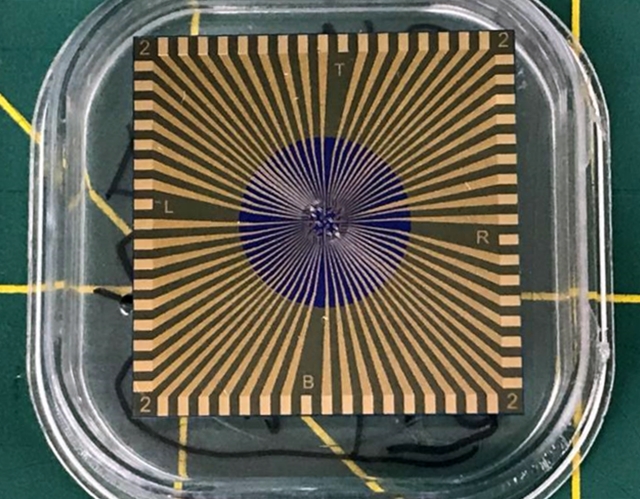
Electronic sensor to detect Covid-19 and influenza viruses (Dmitry Kireev, University of Texas at Austin)
26 June 2020. A university engineering team is developing an electronic sensor to quickly detect and distinguish between Covid-19 and influenza viruses. Work on the device is led by electrical engineering professor Deji Akinwande at University of Texas in Austin, with the one-year project funded by a $150,000 award from National Science Foundation.
As the number of Covid-19 cases in the U.S. continues to grow, and in some cases accelerate, fears are rising of a so-called second wave of coronavirus infections. That second wave, projected for the fall and winter, would be complicated by the annual influenza season, which also appears in the fall and winter, which shares many of the same symptoms as Covid-19. As a result, health authorities need a point-of-care device that can quickly detect Covid-19 and seasonal flu, but also discriminate between the two conditions.
Akinwande’s group in Austin studies nanoscale electronic systems and materials, including devices for biomedical use. Among the materials Akinwande and colleagues investigate is graphene, a material with many desirable qualities for a range of industries. The material is very light, strong, chemically stable, and only one atom in thickness, arrayed in a hexagonal pattern. Graphene can conduct both heat and electricity, with many applications in electronics, energy, and health care. The lab’s work with the material led to flexible graphene touch panels, now commercialized for smartphones in Asia.
The NSF-funded project is building a sensor with ultra-sensitive circuits that can detect and differentiate between Covid-19 and seasonal flu from a small quantity of a person’s body fluid, such as saliva. The sensor uses graphene circuits with antibodies for the SARS-CoV-2 virus spike protein responsible for Covid-19 infections and H1 hemagglutinin proteins characteristic of influenza viruses. The antibodies are fixed to the graphene circuits with 1-pyrenebutyric acid N-hydroxysuccinimide ester, or PASE, a linking chemical used in other graphene bio-sensors. A third empty channel acts as a reference measure and test for ambient signals.
The researchers are building a prototype sensor, about the size of a micro-USB drive, to test and document the device’s key properties: sensitivity or true positive and specificity or true negative readings, detection limits, accuracy, and response time. The sensor will be tested with deactivated SARS-CoV-2 and H1N1 viruses, and later with human fluid samples.
The lab is taking advantage of earlier work with colleagues in Nigeria to develop a bio-sensor for detecting iron deficiency in children. In that case, the sensor’s antibody detects ferritin, a protein in blood containing iron and an indicator of iron deficiency. “It became clear,” says Akinwande in a university statement, “that just by changing the antibody, we could pivot the platform to focus on the coronavirus.”
National Science Foundation awarded the funds under its Rapid Response Research program that provides up to $200,000 for projects of up to one year to support technologies for fighting the Covid-19 pandemic.
More from Science & Enterprise:
- Fast Covid-19 Antibody Test Gets BARDA Funds
- Data Company Building Covid-19 Early Warning System
- Large-Scale Antibody Screening Device in Development
- GSK, Biotech Partner on Crispr Covid-19 Test
- Venture Producing Covid-19 Antibody Test Kits
* * *

 RSS - Posts
RSS - Posts
You must be logged in to post a comment.